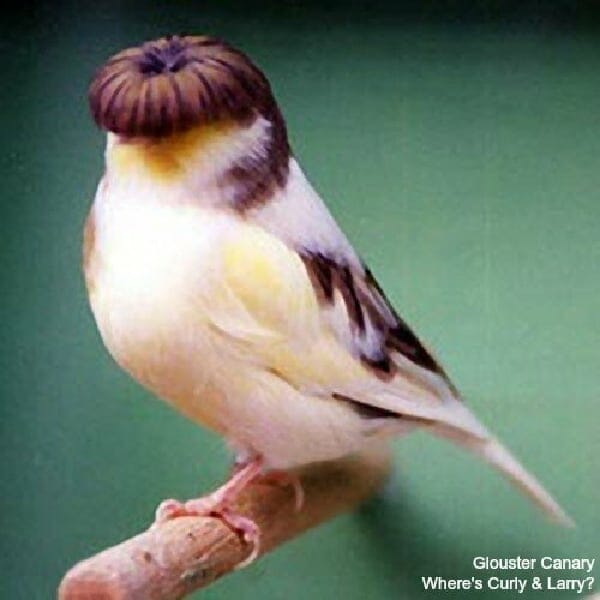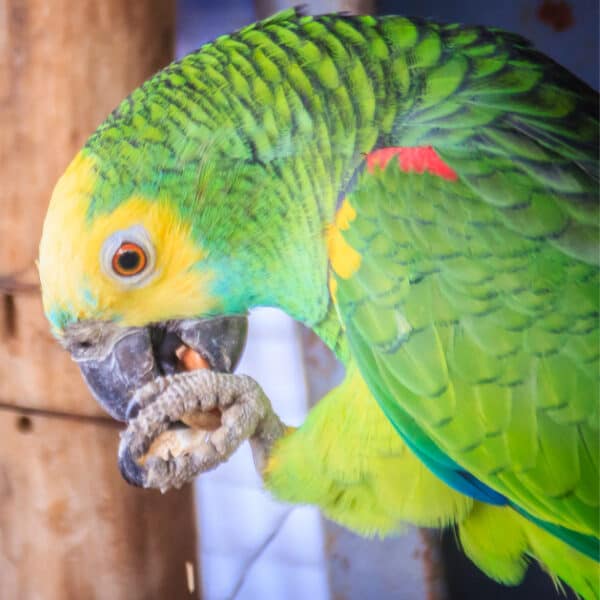Last Updated on by Mitch Rezman
Before iPods there were boomboxes. Before boomboxes, there were stereo radios. Precursors to phonographs were Victrolas.
But the way to get tunes in your home long before there was electricity was the natural sound of bird songs.
For years people would place a Canary or other singing finches in a small cage on either side of the room and whoever did that first can take credit for inventing stereo sound.
Canaries are small songbirds coming from the Finch family and were initially found in places like the Azores and believe it or not the Canary Islands.
The Spanish sailors brought canaries to Europe in the 1600s and (the canaries) became a mark of high fashion. Spanish and English kings had reading courts that they liked to have the birds perform at.
Those intrapreneurial monks bred them and sold only the males (the ones that sing) which kept supply down and prices up.
In England originally only rich people owned canaries but they were so easy to breed they became a popular commoner’s pet. They’ve been known to live for from 10 to 15 years.
In our post about birds that work for money, canaries were popular with coal miners. They were the original first responders and would give their lives to warn the miners that noxious gas was escaping.
One of our newest customers bird after a bath
Unlike parakeets you should never introduce a mirror to a Canary because they are so territorial they believe that the “other” Canary in the cage is a threat and they can actually forget to eat or move about because of the “other” Canary in the mirror.
Don’t underestimate Canaries need to play with bird toys. Simple toys with beads and fibers they can poke their beak at will be embraced by these smart little birds. Small bell toys are enjoyable.
Shifting gears
What do you recommend as the best feeding program for Canaries? I have an American Singer.
Thanks, [email protected]
We have to admit that we are not experts on canaries even though I did raise a few many, many years ago.
I looked and found this site that offers all the information you could ever need on canaries.
We offer a few canary seed mixes that are very nice. This one is quite popular. Volkman Canary.
Higgins Egg food is very much appreciated by canaries.
Dried greens also help when fresh is not easy – Higgins Leafy Greens and Higgins Song Food mixture is nice for singing canaries too.
Supplying a bit of Mineral Grit in a treat dish can also help aid in digestion and calcium supplementation. If you have egg-laying Canaries it is extremely important to provide calcium sources like cuttlebone and liquid or powdered calcium products.
I hope this is helpful.
Thank you
Written by Mitch Rezman
Approved by Catherine Tobsing
Author Profile
Latest entries
 The Traveling BirdJune 26, 2025Can You Name 5 Parrot Species That Are Living Wild in the USA?
The Traveling BirdJune 26, 2025Can You Name 5 Parrot Species That Are Living Wild in the USA? Bird BehaviorJune 26, 2025How is it Parrots Are Problem Solvers Social Animals and Even Use Tools?
Bird BehaviorJune 26, 2025How is it Parrots Are Problem Solvers Social Animals and Even Use Tools? Bird & Parrot AnatomyJune 25, 2025How a Tiny Chemical Modification Makes Parrots Nature’s Living Paintings
Bird & Parrot AnatomyJune 25, 2025How a Tiny Chemical Modification Makes Parrots Nature’s Living Paintings PigeonsJune 20, 2025How Do Parrots Thrive in Cities Outside Their Native Habitats?
PigeonsJune 20, 2025How Do Parrots Thrive in Cities Outside Their Native Habitats?




